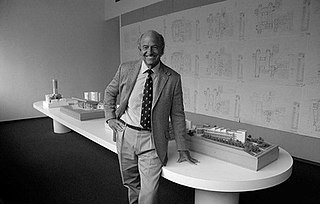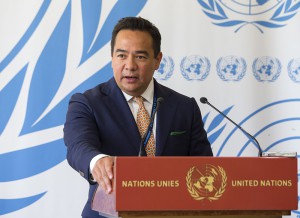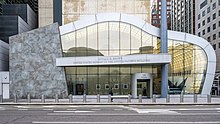The United States order of precedence is an advisory document maintained by the Ceremonials Division of the Office of the Chief of Protocol of the United States which lists the ceremonial order, or relative preeminence, for domestic and foreign government officials at diplomatic, ceremonial, and social events within the United States and abroad. The list is used to mitigate miscommunication and embarrassment in diplomacy, and offer a distinct and concrete spectrum of preeminence for ceremonies. Often the document is used to advise diplomatic and ceremonial event planners on seating charts and order of introduction. Former presidents, vice presidents, first ladies, second ladies, and secretaries of state and retired Supreme Court justices are also included in the list.

Tony Patrick Hall is an American politician, businessman, and diplomat who served as a member of the U.S. House of Representatives, representing Ohio's 3rd congressional district from 1979 to 2002. Hall had previously served in both chambers of the Ohio General Assembly.

The Bureau of International Organization Affairs (IO) is a bureau in the United States Department of State that creates and executes U.S. policy in the United Nations and other international organizations. It is headed by the Assistant Secretary of State for International Organization Affairs. The IO is charged with developing and implementing the policies of the U.S. government with respect to the United Nations and its affiliated agencies, as well as within certain other international organizations. The Bureau of International Organization Affairs was created in order to strengthen the United States involvement in important international relations.

Anne Woods Patterson is an American diplomat and career Foreign Service Officer. She served as the Assistant Secretary of State for Near Eastern Affairs from 2013 to 2017. She previously served as United States Ambassador to Egypt until 2013 and as United States Ambassador to Pakistan from July 2007 to October 2010.

In regards to the United Nations, the Campaign for a United Nations Parliamentary Assembly is a "global network of parliamentarians, non governmental organizations, and scholars" that advocates for representatives, not only states, to have "a direct and influential role in global policy."

Charles Gwathmey was an American architect. He was a principal at Gwathmey Siegel & Associates Architects, as well as one of the five architects identified as The New York Five in 1969. Gwathmey was perhaps best known for the 1992 renovation of Frank Lloyd Wright's Guggenheim Museum in New York City.

The School of International and Public Affairs (SIPA) is the international affairs and public policy school of Columbia University, a private Ivy League university located in Morningside Heights, Manhattan, New York City. SIPA offers Master of International Affairs (MIA) and Master of Public Administration (MPA) degrees in a range of fields, as well as the Executive MPA and PhD program in Sustainable Development.

The United Nations Postal Administration (UNPA) is the postal agency of the United Nations. It issues postage stamps and postal stationery, denominated in United States dollars for the office in New York, in Swiss francs for the office in Geneva and in euros for the office in Vienna. As such, UNPA is the only postal authority that issues stamps in three different currencies.

International Day of Non-Violence is observed on 2 October, the birthday of Mahatma Gandhi. It was established on 15 June 2007 according to United Nations General Assembly resolution A/RES/61/271. The day is an occasion to "disseminate the message of non-violence...through education and public awareness...and reaffirm the desire for a culture of peace, tolerance, understanding and non-violence". It is not a public holiday, but is observed around the world in various ways, often to draw attention to global issues. Its date and purpose correspond with those of the Indian national public holiday of Gandhi Jayanti.
A permanent representative to the United Nations is the head of a country's diplomatic mission to the United Nations.
African-Americans in foreign policy in the United States catalogs distinguished African Americans who have and continue to contribute to international development, diplomacy, and defense through their work with the U.S. Department of State, the U.S. Agency for International Development, the U.S. Information Agency, and the U.S. Congress, and other notable agencies and non-governmental organizations. The creators acknowledge the presence of the interagency contributions to the foreign affairs realm, and welcome additional content to showcase the achievements of African-Americans in other relevant USG agencies.

Public Law 113-110 is a law that "ban(s) Iran's new United Nations ambassador, who has ties to a terrorist group, from entering the United States." Iran's proposed ambassador, Hamid Aboutalebi, is controversial due to his involvement in the Iran hostage crisis, in which a number of American diplomats from the US embassy in Tehran were held captive from 1979 until 1981. Aboutalebi said he did not participate in the takeover of the US embassy, but was brought in to translate and negotiate following the occupation. President Barack Obama told Iran that Aboutalebis selection was not "viable" and Congress reacted by passing this law to ban his presence in the United States.

Keith Michael Harper is an American attorney and diplomat who was the first Native American to ever receive the rank of a U.S. ambassador. He is a member of the Cherokee Nation of Oklahoma and as a lawyer he is known for working on behalf of Native Americans. He was, from June 2014 to January 2017, the U.S. representative to the United Nations Human Rights Council in Geneva.
Elizabeth M. Cousens is the current President and CEO of the United Nations Foundation.

Linda Thomas-Greenfield is an American diplomat who serves as the United States ambassador to the United Nations under President Joe Biden. She served as the U.S. assistant secretary of state for African affairs from 2013 to 2017. Thomas-Greenfield then worked in the private sector as a senior vice president at business strategy firm Albright Stonebridge Group in Washington, D.C.

Richard Merrill Mills Jr. is an American diplomat who serves as the United States deputy ambassador to the United Nations. He served as the U.S. Chargé d'Affaires and Acting Permanent Representative to the United Nations between January 20, 2021, and February 24, 2021, when Linda Thomas-Greenfield became ambassador. In July 2022, he was announced as the nominee to serve as the United States ambassador to Nigeria.

Jonathan Raphael Cohen is an American diplomat and most recently served as the United States Ambassador to Egypt from November 17, 2019 to March 31, 2022. He previously served as the United States Deputy Representative to the United Nations. From August 2016 to June 2018 he served as a Deputy Assistant Secretary of State for European and Eurasian Affairs. He was nominated by President Donald Trump in early 2018 to become United States Deputy Representative to the United Nations and was unanimously confirmed by the Senate on May 24, 2018. On January 1, 2019, Cohen assumed acting duties of Ambassador to the United Nations following the resignation of Nikki Haley the previous day; with the installation of her successor Kelly Craft in September, he relinquished those duties.












